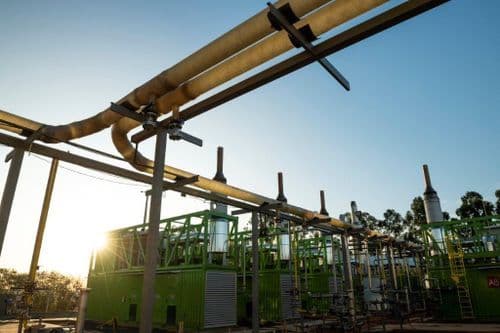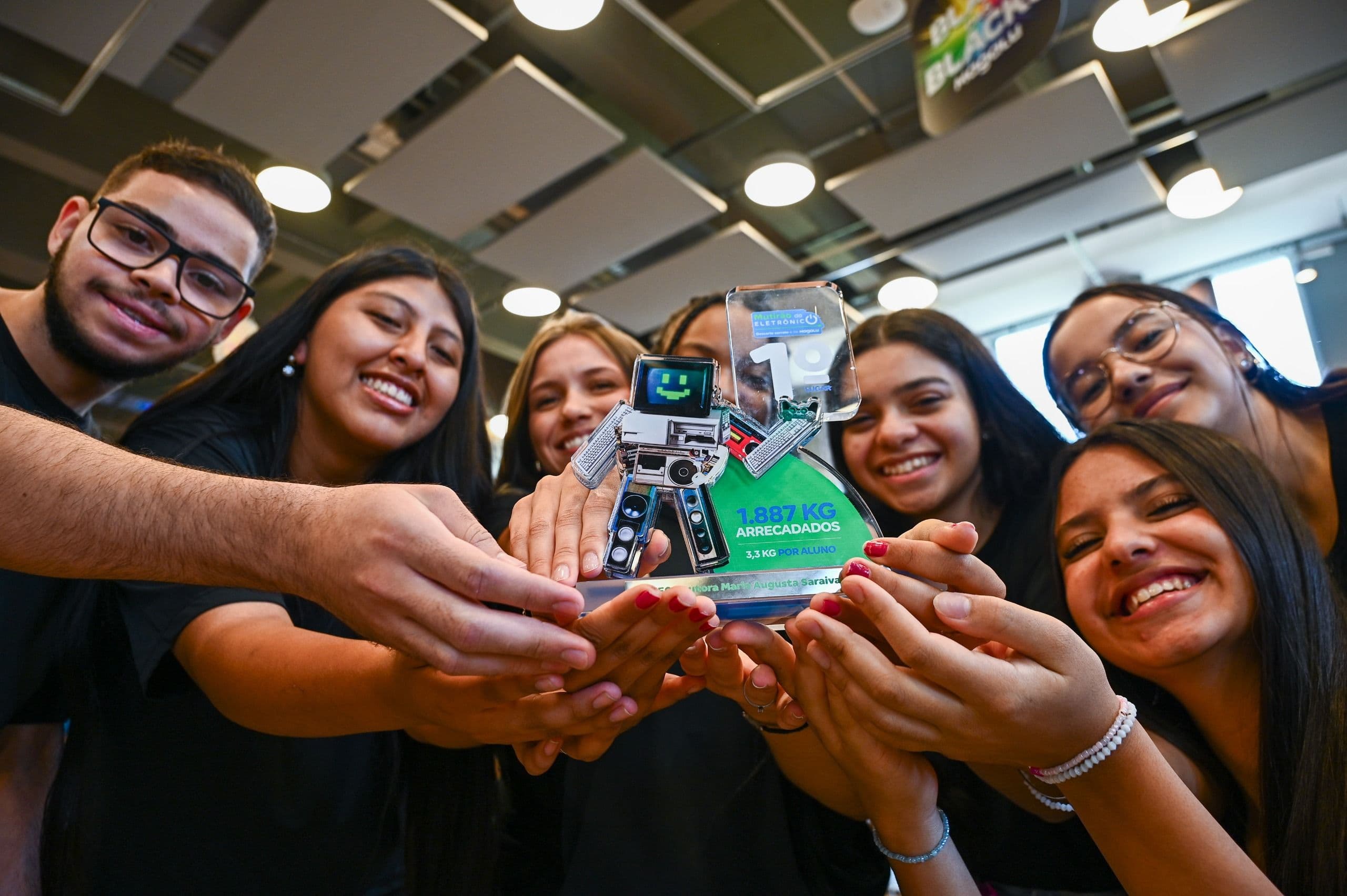
09/02/2023
Biogas and Biomethane: The link between brazilian sanitation and energy gain
By Julliana de Melo, special reporter for the Circular Movement
When we talk about the environment, the tons of waste that we produce every day in the world soon appear as villains, since part of it is disposed of in nature without any care. However, the organic materials found in the sewerage networks and the sanitary landfills are already seen today as important alternatives for obtaining cleaner energy. We are now talking about biogas and its more refined derivative, biomethane.
At the same time, these alternative sources have the potential to meet part of the energy demand in lieu of fossil fuels and to promote better management of organic waste in landfills and sewage treatment plants, reducing greenhouse gas emissions to the atmosphere and joining other fronts in tackling the global climate crisis. Urgent topic of nowadays.
According to professor and researcher Edson Grandisoli, pedagogical coordinator of the Circular Movement, the production of biogas and biomethane in sanitation is resonant with some fundamental precepts of the circular economy, which is to decarbonize the economy and search for new ways to reuse waste to the maximum. "What would be trash or sewage is going to generate energy. And since we take advantage of it, we stop producing waste at the end of this chain."
"Promising Biogas Segments”

In Franca, São Paulo, the only place that purifies sewage biogas for biomethane production in Brazil has been in operation since 2018. The biogas treatment system is being carried out by Sabesp, the State of São Paulo Basic Sanitation Company, starting from digestion by bacteria of the sludge produced in the treatment of sewage.
"When producing biomethane, we put methane to an interesting end use, as it was going to come out of the sewage treatment anyway. When thrown into the atmosphere, it has a great impact on climate changes, which reduces by a 21-fold when it is burned in cars as biofuel", points out Cristina Zuffo, Sabesp's superintendent of Research, Technological Development and Innovation.
The Franca Sewage Treatment Plant (ETE) currently treats 530 liters/second of sewage and produces around 3,000 m³/day of biogas. The internationally awarded experience feeds with biomethane the station’s entire fleet of vehicles. An average of 180 supplies per month, in 40 vehicles adapted to the GNV standard. This volume, in spite of still being below production capacity, now represents savings of R$ 446,000 with the reduction of the company's consumption of ethanol, which is responsible for about 30% of the investment in basic sanitation made in the country.
According to Cristina Zuffo, biogas is only one of the possible applications of waste in SETs, within the concept of a circular economy adopted by Sabesp, which is still analyzing a way of preventing tons of sludge from ending up in landfills. "We need to have a systemic view of the plant and to think about solutions to make it run with the minimum of resources and waste possible, avoiding any kind of waste. And these solutions are not always replicable to all stations."
Biogas itself can have different uses, whether as a source of electrical energy, thermal energy, biomethane or biofertilizers. "And each end use of biogas calls for a different degree of purification. If it is to be used only for burning in a boiler, for example, I reduce moisture to obtain a greater energy value. Now, if I am going to use it to inject in the gas network, which goes to people's homes, or in cars, then a great purification is already needed", Zuffo explains.
Biogas and Biomethane

The market for biogas from basic sanitation already exists and is promising in Brazil, even though it runs into a non-universal and deficit network, besides few public incentives and inefficient regulation for the sector's faster development. "The priority of the sanitation companies is still to guarantee water and sewage. So, first you have to universalize the water, capture the sewage and take it to the treatment stations, have this basic infrastructure, and only then manage to capture the biogas", Zuffo points out.
If the potential is great, the challenge is even greater. Today, about 50% of the volume of sewage in Brazil does not receive adequate treatment, the equivalent of more than 5,300 in natura Olympic sewage pools being poured into the wild per day, according to data from the Treat Brazil Institute. When we talk about waste, the scenario is not very different. Of the 81.8 million tons of solid waste generated annually in the country, only 50 million tons are properly treated in landfills.

Ecoparque da Orizon, in the city of Nova Iguaçu, Rio de Janeiro — Photo: Disclosure
Present in nine states of the country, Orizon Waste Recovery (ORVR3) is responsible for the management of 10 million tons of Urban Solid Waste (MSW) per year. In all, of the 14 ecoparks, five produce biogas, generated naturally from the decomposition of trash, and one already markets biomethane. "We could have stayed still, burying the rubbish for the next generations, but we saw that we could have done something more and transformed this waste into a great business opportunity", says the director of engineering and implantation of Orizon, Jorge Rogério Elias.
He explains that every landfill has a logical principle of physical stability that allows the extraction of biogas. As the landfill rises in several layers, it is possible to extract and treat the slurry, extract and treat the biogas. "Except that instead of this biogas only being burned to have a low impact on the environment, transforming methane into CO2, we can take it and generate electricity and do something useful for society.''

Biogas catchment flares in Paulínia, São Paulo inner-state area — Photo: Disclosure
To fully exploit this energy potential, the company has invested heavily in research, intelligence and skills since 2013 and recently created BioE, a company that will take over all stages of the production chain, responsible for the purchase and processing of biogas in ecoparks for transformation into renewable energy and biomethane. The asset today is 100 installed megawatts. According to Jorge Elias, this energy is generated close to the consumption center on a regular basis. It does not depend on the sun, on wind, on rain; and, besides predictability, it also reduces the levels of loss in the electrical system.
Biogas is not the miracle source that will solve the world's energy issue. That’s a Fact. But in the global decarbonization wave, it has a relevant potential that cannot and should not be wasted. According to Biogas, if all the waste produced by farming and sanitation had the use of energy, the generation of biogas could supply 35% of the demand for electricity, and biomethane, 70% of Brazil's diesel oil consumption. However, it is important to point out that within the requirements of the Circular Economy, the ideal is not to generate waste or even that this material needs to be disposed of in landfills.


What is the circular economy?
The Circular Economy proposes a new look at our way of producing, consuming, and disposing, in order to optimize the planet's resources and generate less and less waste. In other words, an alternative model to the Linear Economy - to extract, produce, use and discard - which has proved to be increasingly unsustainable throughout history. In the Circular Economy, the goal is to keep materials in circulation longer by reusing them until nothing becomes waste! For this model to become a reality, we all have a role to play. It is a true collaborative circle, which feeds itself, and helps to regenerate the planet and our relations.
Learn about Circular Economy
If you are interested in learning more about this topic, visit Circular Academy , the first free Latin American course on circular economy aimed at general audiences. All of us, in partnership and collaboration, can make a difference in building a more circular planet.
Discover more
In the same subject:

Magalu’s Electronic Drive sends 87 tons of waste for recycling in São Paulo
Carried out in partnership with Circular Movement, the Magalu initiative combined teacher training, community mobilization and reverse logistics to expand the proper disposal of electronics.
